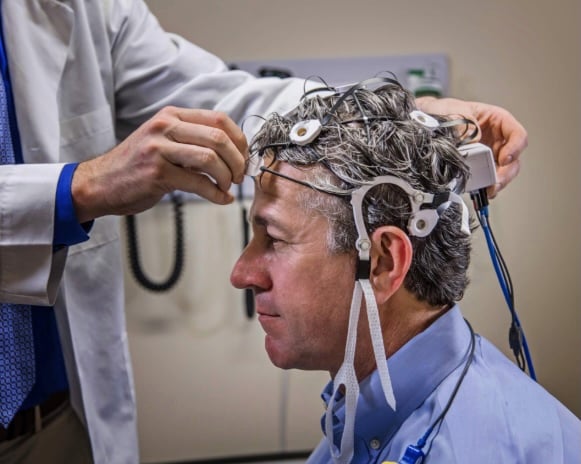The Clinical Challenge of Overlapping Symptoms
Patients with chronic conditions often present with leg discomfort that may reflect either neuropathy or vascular disease. Numbness, burning, tingling, or exertional pain can arise from small fiber neuropathy or peripheral arterial disease (PAD). The overlap is especially common in diabetes and metabolic syndrome, where microvascular compromise and neuropathy frequently coexist. Distinguishing between these conditions is clinically important: PAD carries major implications for cardiovascular morbidity and mortality, while neuropathy reflects neural injury that requires a different management approach.
The TM Flow System provides in-office physiologic data that helps clinicians evaluate neuropathic and vascular contributions during a single testing session.
How the TM Flow System Measures Vascular and Neuropathic Function
The TM Flow System integrates three noninvasive assessments into a single testing session:
Ankle-Brachial Index (ABI): Measures large-vessel perfusion using photo-plethysmography (PPG) or pneumo-plethysmography.
Sudomotor Testing: Evaluates sympathetic small fiber nerve activity through sweat gland innervation, reflecting postganglionic nerve integrity.
Autonomic Testing: Includes heart rate variability (HRV), spectral waveform analysis, and cardiac autonomic reflex (Ewing) tests to provide a comprehensive view of autonomic small fiber function.
Taken together, these physiologic measurements give clinicians the ability to assess neuropathic and vascular contributions in the same clinical context.
Differentiating Patterns at the Point of Care
When ankle-brachial index is reduced, especially at or below 0.90, vascular insufficiency should be strongly considered. A normal ABI in the presence of abnormal sudomotor output suggests that symptoms are more likely neuropathic. Autonomic abnormalities add weight to the neuropathy diagnosis, particularly in the setting of small fiber involvement. Patients may present with both abnormal ABI and impaired sudomotor function, reflecting the common overlap in diabetes. In such cases, documentation should capture contributions from both mechanisms, and management should address vascular risk and neuropathic pain in parallel.
Practical Implications for Primary Care
Sorting neuropathic from vascular symptoms in the office improves efficiency and accelerates decision making. A patient with burning feet, normal ABI, and markedly impaired sudomotor activity can be directed toward neuropathy-focused management, with confirmatory testing such as skin biopsy reserved for cases where treatment hinges on diagnostic certainty. Conversely, a patient with exertional calf pain and a low ABI can be referred promptly for vascular imaging and guideline-directed medical therapy. When both are present, clinicians can set expectations with patients that neuropathic and ischemic processes are simultaneously active.
Guardrails in Interpretation
Ankle-brachial index may be unreliable in the presence of calcified vessels, especially in advanced diabetes and chronic kidney disease. Toe-brachial index or vascular laboratory evaluation may be needed when ABI is noncompressible or inconsistent with symptoms. Sudomotor abnormalities, while indicative of small fiber involvement, do not establish etiology. They should be interpreted alongside history, exam, and laboratory evaluation. The TM Flow System provides physiologic signals, but the clinician remains responsible for integrating those signals into the broader clinical picture.
Advancing Care Through Clearer Differentiation
By consolidating vascular and neuropathic testing into a single, noninvasive protocol, The TM Flow System helps clinicians resolve diagnostic uncertainty more quickly. It supports a structured approach to lower extremity complaints, clarifies when to escalate vascular or neurologic evaluation, and improves documentation. In patients where neuropathy and vascular disease overlap, it encourages parallel management and prevents under-recognition of either pathology. In short, it provides the clarity necessary to separate neuropathic pain from vascular insufficiency and to guide care on the first encounter.
To learn more or schedule a demonstration of the TM Flow System, contact Primary Care Diagnostics.






